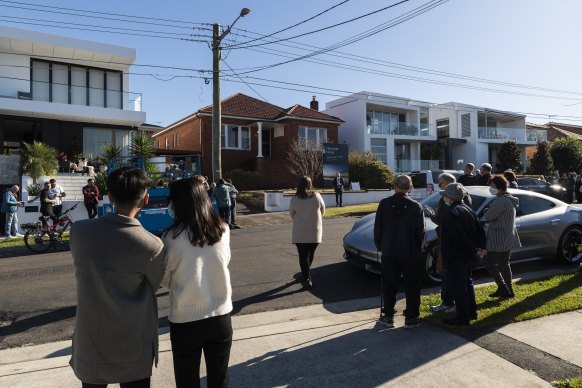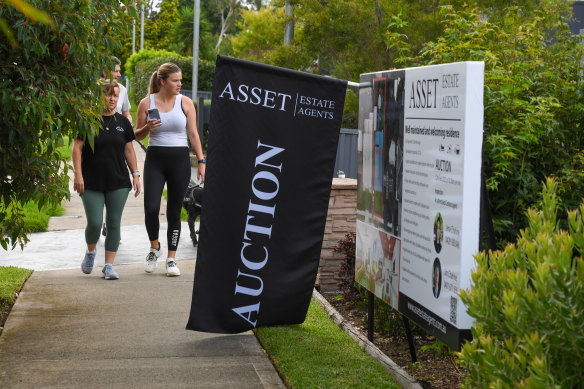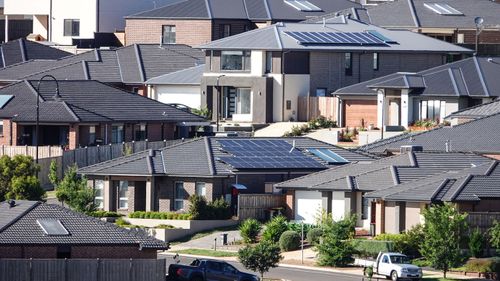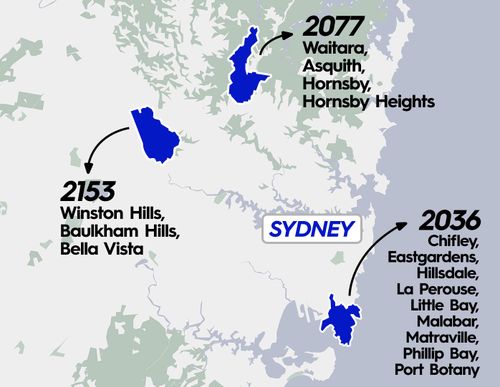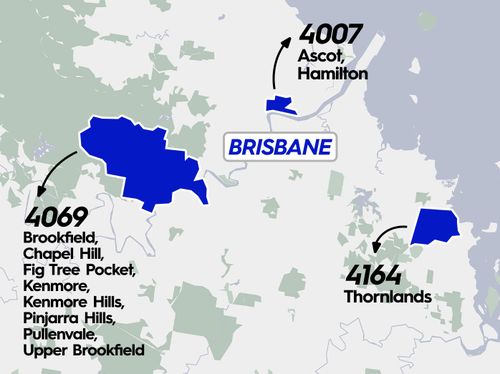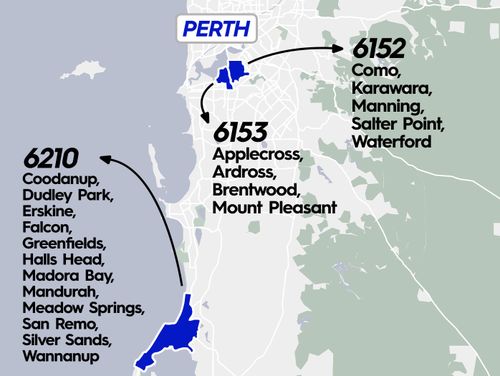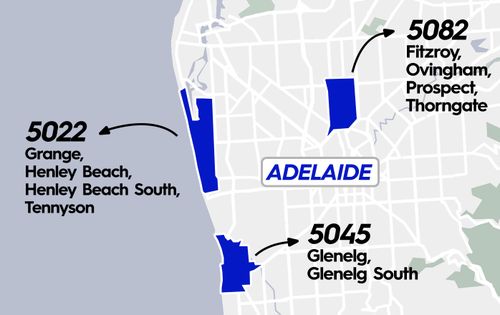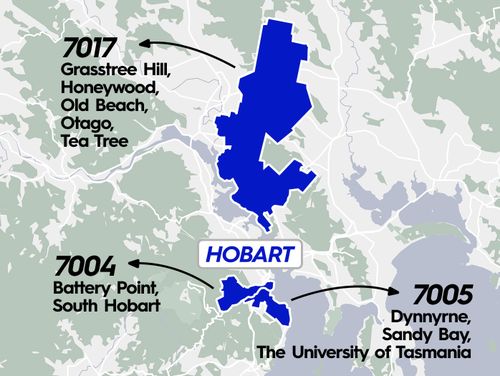An Australian mum has shared her incredible bargain grocery haul and revealed the exact time she went to the supermarket to nab the deals.
The woman, from Wodonga, Victoria, managed to score $215.11 worth of goods for just $10.92 when she visited Coles at 8pm.
She bought 26 heavily-discounted items with a range of meats including kangaroo kebabs for just 47 cents, chicken breasts for $1.08 down from $20, bacon for 28 cents a pack and and eight-pack of beef chevaps for 32 cents.

A thrifty mum has shared how she bought $215 worth of groceries for just $10 by going to the supermarket at around 8pm
Also included in the stash was three liters of milk down to 32 cents, a nine-pack of vanilla cupcakes for 27 cents, ready-made spaghetti meals for just 32 cents each as well as lamington donuts, coleslaw mix, veggie mince, yoghurt, and cream.
The bargain hunter said she was ‘absolutely stoked’ with her impressive haul in a post to a popular Facebook group, Markdown Addicts Australia.
‘Our freezer is now full which is a relief with rising prices,’ she said in the comments.
The post received more than 1,700 ‘likes’ and prompted a flurry of responses from fellow members wanting to know the mum’s budget shopping secrets.
‘Score! Especially in the recent food cost hike. Jealous but stoked for you,’ one woman commented.
‘Price hikes have been insane!’ the poster replied.
‘So jealous I never score great bargains,’ a second wrote to which the shopper said she ‘happened to show up’ as an employee was starting to mark down the items.
‘We went down the aisles then would go back and pick up the bargains as he left,’ she said adding she gave the worker space making sure not to crowd him.
‘So you find these on one section OR do you go around the whole shop finding them?’ another asked.
‘Multiple sections – most meat was in a pile in the meat section, dairy usually put next the milk, cakes & bread together etc,’ the mum answered.

The next evening, the bargain hunter returned to Coles at the same time and picked up $75.60 worth of items that had been discounted to just $3.95
Just a day later, the Wodonga mum picked up another markdown haul when she returned to the same Coles at the same time.
She spent just $3.95 on $75.60 worth of items including plant-based patties, bread, cupcakes, zucchini noodles, loaves of bread and bagels.
‘After last night I wanted to see if I could back it up! Seems our store has decided 8pm is the time to start marking down!’ she wrote in another post.
‘Had to leave after meat but they seem to do bakery then meat, then the dairy fridges and around in a circle.’
Dozens of shoppers have been sharing their tips and tricks for nabbing bargains at the supermarkets amid the rising cost of living.
One woman came across a 500g pack of butter for just $1.88 marked down from $7.50 at her local Central Coast store and purchased the lot.

Shoppers have been sharing their tips for nabbing bargains at the supermarkets amid the riding cost of living including one mum who bought all the marked down butter on the shelf
She shared her find to the group dividing members with some impressed by the bargain while others said she should have left some for others.
The woman, who is a keen baker and uses a lot of butter, attracted more than 1,100 ‘likes’ on her post and sparked a lively debate with dozens of comments.
The post was flooded with comments from disgruntled shoppers who say they ‘would have left some’ for others.
‘I would have left some, as there are many people struggling, good find,’ one person quipped.
‘During these hard times and so many people doing it tough I would have left some for someone else. But that’s just me,’ another said.
‘I left ALL the meat. Shelves and shelves of it. I bake ALOT so the butter is great for me,’ the home baker responded.
However, not everyone was unhappy about the Lake Haven woman’s butter haul with many jumping to her defense and complimenting her ‘great score’
‘I would have taken them all, I love a bargain and this is something that gets used daily in my house so you bet if I saw them I’d take em all too!,’ one mum said.
Another Coles customer from Coomera in Queensland bought $170 of chicken as well as a some dairy and deli items for just $25 when she nipped into the store at 7pm on the way home from work for what was supposed to be a ‘quick stop’.
‘One happy house wife. Worth $169.94. Paid $25.20. My fam will start to grow feathers, ‘she wrote in a post with a photo of her budget shop de ella.

Another savvy shopper picked up $170 worth of heavily discounted chicken and groceries for just over $25 however many warned against stockpiling meat close to its use-by date
She bought 21 packets of chicken and turkey including whole birds, wings, negs, legs and mince as well as an iced coffee, yoghurt and hummus at just a fraction of the price.
Her post drew in hundreds of comments and prompted a debate among shoppers who cautioned against keeping meat close to its use-by date for too long even when it’s been frozen.
‘Great pick up especially with the cost of meat! But my anxiety would never let me eat it – discounted meat especially chicken is a no go,’ one mum warned.
‘Looks like they’ve been reduced twice, you might want to give it a quick sniff,’ another recommended while a third wrote: ‘I use the rule if it smells and is slimy THROW IT OUT. This applies to stuff in date by days or a day or 2 left and purchased on clearance.’.
‘If you want to eat something that could make you very sick and call it a bargain well I suppose as long as your happy, I truly hope you don’t get serious food poisoning,’ a fifth quipped.
‘Do some of y’all really think when the clock strikes midnight chicken is instantly riddled in salmonella? Like you know that’s not how bacteria works right…’ argued another.
Others suggested opening, repackaging and even rinsing the discounted meat before freezing to check whether it’s safe to eat.
‘Clearance meat (not just chicken) is always opened, sniff, slimy test done, repackaged and frozen,’ one shopper said.
‘I remove from original packaging wash the juice, then portion them in freezer bags and freeze. Once I have got poisoned from was already marinated and cooked without washing,’ a second explained.
Food safety experts however have said not to wash raw chicken as it can spread harmful bacteria around the kitchen.
According to the Queensland government initiative Healthier, washing chicken is not recommended as droplets of bacteria can splash around the kitchen and contaminate surfaces, equipment and other food causing illnesses like Salmonella.
Many of Coles chicken packages advised customers to store at or below 5C and if freezing, do so on the day of purchase and use within a month.
‘Allow to fully thaw in the refrigerator prior to cooking and keep refrigerated until use. Use within 1 days of thawing. Once thawed do not refreeze,’ the package reads.
.
















